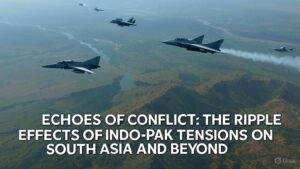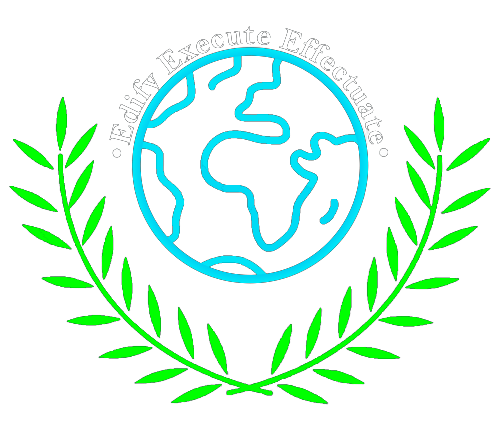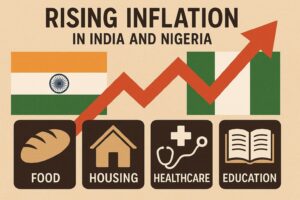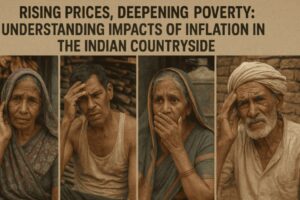
Echoes of Conflict: The Ripple Effects of Indo-Pak Tensions on South Asia and Beyond
INTRODUCTION Following the Pahalgam attacks, India’s retaliatory actions, justified according to the international laws, were taken as an act of war by Pakistani ministries. This led to cross-border attack by drones, missiles, and fighter jets between the two countries. When the apparent ceasefire was violated, it led to many political tensions in the country. This research paper aims to study the various economic, cultural, social, and political impacts of terrorism amid Indo-Pak tensions. It will also study the global context of cross-border terrorism, essential to critically study India’s nuclear war, and what gets obscured in the new military-industrial of nation-states. This paper then, in its attempt, will compose of concepts and interpretations revolving around terrorism, both in the global and domestic context. This article will answer certain integral questions like what is the relevance of mineral resources in such tensions, what are the methods and approaches followed by other countries to deal with terrorist activities, what is the impact of such tensions on the economy, how does this incident leads to an impact on urban displacement and tourism etc. THE ACTION OF MINISTRY OF EXTERNAL AFFAIRS OF INDIA Immediately after the political tensions escalated between India and Pakistan, X received orders from Indian Government to ban around 8000 accounts, both international and national, for purposes of national security. Multiple accounts, of celebrities, media channels and political, foreign governmental accounts were shut down. The external affairs ministry contacted multiple nations and was determined to brief the situation to secretaries and representatives of other countries. Moreover, Pakistani nationals were barred from entering India using SAARC Visa (Foreign Secretary Vikram Misri), and any previous SVES visas granted to citizens of Pakistan were considered to be revoked, with every Pakistani national still in India to deport within 48 hours. The Indian High Commission in Islamabad would no longer have its own defence, navy, and air advisors. Additionally, five of the Service Advisors’ support workers were to be removed from both High Commissions. Understanding The Stance Of Major Powers America’s stance can confuse anyone in the world. On one hand, it supports India superficially, and on the other hand, it provides aid and support to Pakistan as well. Any analysis of its stance will bring us to the self-interested profits generated in America. Since 1954, the American alliance with Pakistan caused India to move closer to the Soviet Union. Now, USA and India do not have strained relations. Since, Donald Trump coming into power, Indo-American relations have seen drastic fluctuations. Trump can be seen floating appreciation of Indian subcontinent, as well as condemning Indian tariff policies. Similarly, boosting Pakistan’s capacity of fighter jets by aiding $397 Million to Pakistan, while condemning terrorism globally. On the other hand, China openly supports Pakistan. The Sino-Pakistani Agreement of 1963 officially settled all the two nations’ territorial problems, and Chinese military aid to Pakistan started in 1966. A strategic partnership was established in 1972 and by 1979, strong economic cooperation had begun. Maintaining a “special relationship” has been a top priority for both nations, and their frequent high-level visit exchanges have resulted in the creation of several cooperation initiatives. Pakistan has received military, technological, and economic support from China; the two countries view one another as close strategic partners. Even during recent escalations, China supported Pakistan expressly. This raises concerns for India as it creates “enemy” neighbours on both sides. India and Russia stand on good terms together. After their famous friendship agreement in 1971, their relations have since been positive and growing. While there is no formal alliance between Russia and Pakistan, their relation has been developing after militant attacks and post-cold war shifts. However, inclination of Russia can be concluded to be towards India more than Pakistan due to strategic relations, diplomatic appreciation, military exchanges, and presence of a common enemy – China, with whom they share a complex history. The UK expressly condemns terrorism. The UK has stated that it would want to assist either India or Pakistan, advising them to defuse the situation and have a conversation. The UK recognizes Pakistan’s need for regional peace and security even as it backs India’s claims that Pakistan harbours terrorism. A diplomatic role in the India-Pakistan dispute has also been offered by the UK, which has emphasized the need for a peaceful conclusion. THE STRATEGIC ROLE OF WATER IN TERRORISM AND STATE RETALIATION In today’s landscape of global security, water has emerged as a strategic tool in terrorist actions and more recently, in counter-terrorism efforts. In the context of Indo-Pak tensions, the role of water has evolved from a background issue to a central instrument of both aggression and retaliation. Violent Non-state actors have started shifting their focus from conventional areas like weapons, violence, and control over territory to water as a tool of influence. Water and water infrastructure has been directly targeted by terrorist organizations to disrupt livelihoods, economies and assert dominance. In August of 2014, ISIS seized control of the Mosul Dam which is Iraq’s largest hydroelectric dam near the Tigris River. Control of the structure gave ISIS the dangerous ability to either flood the city or create a famine. This was a way of displaying power and control to achieve their broader objective of establishing a caliphate. Such incidents of “water weaponization” by terror outfits show how essential resources can be manipulated to instil fear among the population and destabilize entire regions. However, states have also begun to harness this vital resource as a retaliatory measure to such threats. The Pahalgam attack, pushed India to carry out a number of measures to firmly exhibit its zero-tolerance policy towards terrorism. A major non-kinetic response which could have far-reaching consequences was the suspension of the Indus Waters Treaty (IWT). The move to place the treaty in ‘abeyance’ has sent a strong signal that continued acts of state-sponsored terrorism will not be overlooked and will carry serious consequences. The Indus basin is a lifeline for Pakistan’s agrarian economy. 80% of cultivated land relies on water










